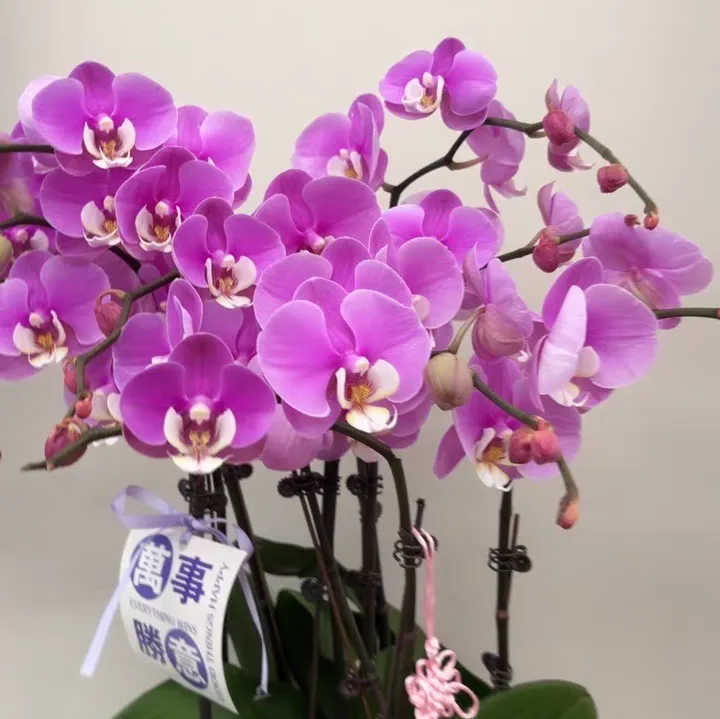When the edges of Phalaenopsis petals turn green and the texture becomes thin and transparent, this is a normal sign of natural flower aging. Below is a detailed explanation:
### I. Signs of the End of the Flowering Period
1. **Chlorophyll Appearance**
- Cell aging causes chlorophyll to show through, resulting in light green晕染 (halos) on the edges of white or light-colored petals. Dark-colored varieties first fade, then gradually turn green.
2. **Cell Water Loss**
- The plant recycles nutrients from the petals, leading to reduced water content in the cells. This makes the petals thin, soft, and lose their firm texture.
3. **Anthocyanin Degradation**
- Anthocyanins in light-colored varieties decompose and fade, while dark-colored varieties follow the pattern of "fading → turning green."
### II. Maintenance in the Late Flowering Stage
1. **Water Control**
- Water once every 15-20 days, keeping the substrate slightly moist. Water along the edge of the pot.
2. **Fertilization Suspension**
- Stop fertilizing 1-2 weeks before the flowers fade. After flowering, use diluted balanced fertilizer to irrigate the roots once a month.
3. **Flower Stem Pruning**
- For strong plants with top buds, retain the stem and only cut off withered flowers. For plants without buds or weak ones, cut 2-3 nodes above the base; for extremely weak plants, cut flush with the base.
4. **Root Inspection**
- Healthy roots are white or light green and firm. If root tips are black or the substrate smells foul, remove the plant from the pot, trim rotten roots, disinfect, and replace the substrate.
### III. Post-Flowering Maintenance Methods
1. **Light**
- Place Phalaenopsis in bright, diffused light to avoid direct sunlight and prevent leaf burns.
2. **Ventilation**
- Maintain good air circulation, with humidity at 60%-80% and temperature controlled at 15-28°C. Extreme temperatures affect growth.
3. **Watering**
- Adhere to the "dry-wet cycle" principle: water thoroughly when the surface of the sphagnum moss turns white.
4. **Fertilization**
- Apply orchid-specific slow-release fertilizer or diluted liquid fertilizer once a month, prioritizing phosphorus and potassium to promote flower bud differentiation. Fertilize in the morning or evening.
5. **Pest and Disease Control**
- Regularly inspect leaves, flower stems, and roots, focusing on preventing spider mites, scale insects, and soft rot. For minor infestations, wipe with alcohol-dipped cotton swabs. Remove diseased leaves and spray fungicides (e.g., carbendazim, chlorothalonil) at the early stage of disease.
6. **Flower Induction**
- In autumn,适当降低 (gradually lower) night temperatures to create a day-night temperature difference of about 10°C for 2-3 weeks to stimulate flower bud differentiation. Meanwhile, reduce watering to simulate a drought environment and induce the plant into the reproductive growth stage.
Reasons for the Transparency of Phalaenopsis Petals

Share with
Tagged in :




Leave a Reply